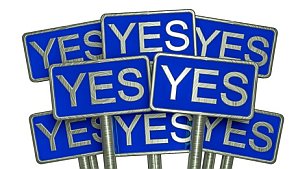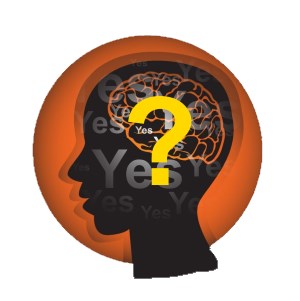 Now there’s a title that makes you think, doesn’t it?
Now there’s a title that makes you think, doesn’t it?
A great sales person knows how to sell to people whether face-to-face or on the phone. But how do you sell on paper or on a website?
Ultimately, running a business online means you want to sell something, right?
This is why you should learn ‘how’ to write persuasively. The better your sales copy, the more conversions.
Here’s a great technique that will persuade your audience to buy.
Let me ask you a question first. Answer it for yourself, and you don’t have to pull out your wallet.
Let’s say that you sell a digital video course worth $47 and you normally sell 100 copies per year. Would you be willing to pay $100 for a sales copy if you knew for sure it would boost your conversions by 10%?
Duh! The answer is “Yes, of course.” You’d be selling 10 more copies at $47. You’d be a thief of your own wallet if you didn’t.
Fortunately, there is a very effective method that we can use to create more persuasive sales copy.
It is guaranteed that this technique will get you more conversions. I don’t want your money, but I do want you to make a tweet, a Facebook post, or a Google+ post about this article. Fair enough?
If you said yes to this last question (I know you did), then you might have fallen for a persuasion technique called the ‘Yes Set’.
I’d still like you to share this article on social media, but even if you don’t, I’ll share this technique with you anyway. 😉
What is the Yes Set?
This is a sales technique, also dubbed ‘The Yes Momentum” or “The Agreement Slide”. Technically it is falls under NLP (Neuro-linguistic programming).
With this technique, you ask a series of questions to a person where it is sure that the response is going to be ‘Yes’. Ideally you would ask around seven to eight of these questions.
For example, if you are a car salesman, on a sunny day, you could be asking a customer:
1) Beautiful days isn’t it? (Yes)
2) Are you checking out some cars? (Yes)
3) I noticed you were looking at the Ford Mustang? (Yes)
4) Take a seat over there, ok? (Yes)
5) Are you comfortable? (Yes)
6) You think this would be a car that would suit you? (Yes)
7) Would you like to take it for a spin? (Yes)
8) Would you like to buy it? (YES)
Between the questions, there can be some chitchat – as long as it is short and doesn’t invite a “No” mindset.
The idea is that once your customer is repeatedly saying “Yes” (even if they are just doing so in their head), then they are more likely to answer the next question with a yes as well.
The psychology behind the Yes Set
The psychological reason behind it is basically the ‘consistency principle’ that our subconscious mind is following. Robert Cialdini has done a lot of research in this field.
 When you make decisions, you do so based on rules and your past experiences and statements. You do this mostly with your unconscious mind because the conscious mind isn’t very efficient in making decisions. Your unconscious mind, however, is able to make complex decisions in a split second.
When you make decisions, you do so based on rules and your past experiences and statements. You do this mostly with your unconscious mind because the conscious mind isn’t very efficient in making decisions. Your unconscious mind, however, is able to make complex decisions in a split second.
You have to be consistent; if you aren’t, you wouldn’t have learned.
We want to be, and be seen, as consistent with our commitments. Nobody wants to be known as a liar or erratic.
When you think about it, you realize that we constantly and consistently work along patterns that are ingrained into our brains.
If you have been driving for years, you will not get in your car and suddenly decide to try shifting the gears differently for a change. You shift the gears fully automatically (unconsciously), exactly the same as you always do. You are following a pattern. You learned this through past experience.
Going a bit further, you probably follow the same morning rituals every day. Driving the same road(s) to work, doing more or less the same things, eating and drinking pretty much the same things, going to bed with the same rituals, usually at around the same time.
We’re creatures of habit.
We follow patterns all day in most of what we do, and we have an inner urge to be consistent with it. That is (proven to be) safe for us. This is how we function.
The danger of this is that you start doing things ‘automatically’ (unconscious) once you’ve done them several times. It frees your conscious brain from tasks so you’ll have more brainpower left for decisions you need to make consciously. Research has shown that the conscious mind can only process five to nine ideas at one time.
Saying yes to a question can therefore happen more or less unconsciously. You will say yes without really thinking conciously about it.
Once a person has said ‘yes’ he has made a commitment, even if he wasn’t quite ‘thinking it through’ at the time.
The consistency principle states that a person will strive to remain consistent with their past decisions and statements. If they aren’t consistent, then they have learned nothing from their past experiences and other people might not see them as reliable or steadfast.
So once a person has said ‘yes’ a number of times, the next question will fly under the radar straight into their subconscious mind, that will respond with a consistent yes answer. Your guard is down at that moment. There is no critical thinking. And now this person wants to be consistent with their ‘commitment’.
Are you starting to see the power of this technique?
Real life examples
Charity organizations use this ‘foot-in-the-door-technique’ to collect money. They first get people to sign a petition like “helping prevent birth defects”. Then they will come back later asking for a donation to a cause that helps prevent birth defects.
The people that signed the petition will want to be consistent with their earlier actions (signing the petition) and feel the need to donate some money to the good cause.
By using this two-step approach, they are able to get a lot more donations.
How to apply the Yes Set
The method in applying this most effectively is to start with a very small request to get a “Yes” answer and then build it up from there, until you finally pop the question that you really want them to have a yes answer to.
The car sale example illustrates how the sales person goes from a ‘beautiful day’ to ‘buy it’.
If you want your reader to take some sort of action (and that is what marketers want), you simply start with three simple questions that invite an answer of “Yes”. Nothing special, just a few simple questions.
Then you make a very small request. It should be very easy to say yes to. For example: “Would you be willing to tweet about my website if I showed you how to make an instant $100?” You bet they would be willing to send out that tweet.
Keep in mind that you are not actually asking them to send out a tweet, you are just asking if they would. That is all. You aren’t after that tweet, you just want to get a “Yes” answer.
Once they comply, you can make a bigger request. “…Oh and I want you to create a short testimonial for me, ok?”
Last but not least, you close the deal by asking them to click your Call-To-Action button. If your (potential) customer went along with your earlier requests, then chances are that they are going to click that button.
If you look around you, will see that the successful marketers are constantly using this technique. Sometimes they don’t even realize it themselves, but it happens all the time.
Have you ever attended a webinar? If so, did you notice that the speaker sometimes asks you to type a 1 in the comment box to confirm that you can hear him? If you couldn’t hear him, you wouldn’t be typing that 1 now would you?
The sole purpose of that ‘request to comply’ is to initiate a Yes Set. During the webinar, the speaker will frequently ask you some obvious yes-questions.
“Who would like to make some money today?” Well isn’t that why you are attending the webinar in the first place?
“Type 1 if you want me to show you <some real results/website/account>.”
“Would you invest $50 if you knew you’d make at least $100 back?”
Etcetera.
This is how they get people pumped, and before they know it, they are pulling out their credit cards to purchase high ticket items.
You learn this sort of technique on sales courses. Some MLM companies will teach you this sort of sales tactic as well. Now you know the psychological principle behind this technique.
Using the Yes Set in spoken conversations
When you speak face-to-face it is quite easy to apply this technique. To get a yes answer, you can use an array of techniques:
Repeat back what they said to you. “Ah ha, so you want a sports car?”
You can talk about the weather.
You can make obvious statements, like “You can’t predict the future, can you?”
Reference past and common experiences, like “You know how kids are, right?”
If you don’t know what question to ask, you can simply put a question mark behind every sentence (upward tonality at the end of a sentence).
Using the Yes Set in copywriting
In copywriting you can not use all of the techniques available in spoken conversations. There are more unknown variables and you have to be able to put yourself in the position of your reader.
Here are a few general questions that will induce yes answers.
- Wouldn’t you like to/love to … ?
- Are you tired of… the same old… and have nothing to show for it?
- Do you want/need/deserve a better … ?
- Have you ever asked yourself … ?
- Do you ever wonder about … ?
- Are you/Would you be interested in … ?
You can use these questions everywhere throughout your copywriting – as long as you are building towards your final question that you want the yes answer to.
Next time you create an ad or blog post, try this out. It takes a little practice, but you’ll find out that it actually works.
Now about that tweet I mentioned earlier … did you find this article useful? Would you do me a small favor? Click one of the Social Media share buttons below, ok? Thanks in advance!
[hcshort id=”10″]